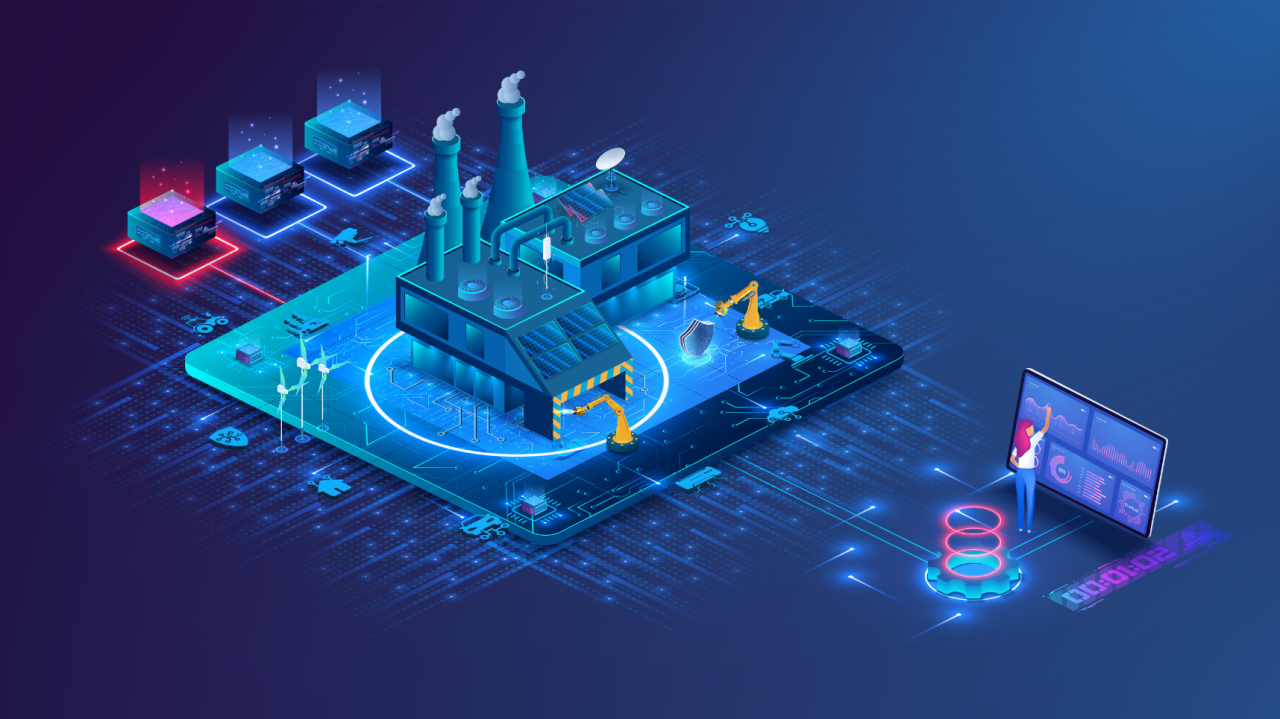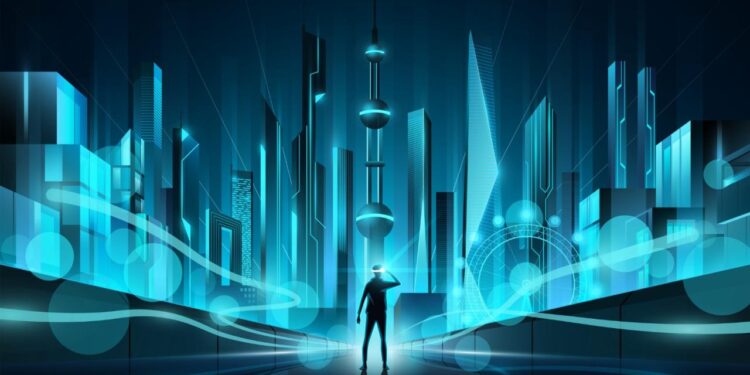In the rapidly evolving landscape of technology, a concept once confined to the pages of science fiction has now captured the collective imagination of the world: the metaverse. Far from being a simple video game or a social media platform, the metaverse is envisioned as a persistent, shared, and immersive digital universe where the physical and virtual worlds converge. It promises to be the next major evolution of the internet, a three-dimensional space where we can work, play, socialize, and create in ways that are currently unimaginable. This comprehensive article delves into the profound implications of the metaverse, exploring the core technologies that will power it, the diverse applications that will define its economy, and the immense opportunities and challenges that lie ahead as we take this monumental digital leap.
For the past several decades, our interaction with the internet has been largely two-dimensional, confined to flat screens on our computers and smartphones. We navigate through websites, scroll through social feeds, and communicate through text and video. The metaverse, however, is a paradigm shift. It is a persistent, always-on virtual world that you can enter and interact with, not just view. It’s a place where your digital avatar can attend a concert, your team can collaborate on a project in a virtual office, or you can shop for a new outfit that exists both as a physical product and a digital asset for your avatar. This is not a new idea; virtual worlds like Second Life have existed for years, but the combination of powerful new technologies—from virtual reality (VR) and augmented reality (AR) to blockchain and AI—is finally making the metaverse a scalable and compelling reality.
The global interest in the metaverse has exploded, with tech giants like Meta (formerly Facebook), Microsoft, and Nvidia pouring billions into its development. They see a future where the metaverse is not just a destination but a new economy, a new social fabric, and a new way of life. The potential for creation and commerce is staggering. Digital land is being sold for millions of dollars, virtual fashion is becoming a multi-million-dollar industry, and digital art in the form of NFTs (Non-Fungible Tokens) is breaking auction records. This is more than just hype; it is the early stage of a fundamental restructuring of our digital existence. As we build the virtual infrastructure of this new world, we are also building the new rules of engagement, the new forms of ownership, and the new possibilities for human connection and creativity. The metaverse is not coming; it is already being built around us.
The Technological Foundation

The metaverse is not a single piece of software but a convergence of several cutting-edge technologies that work in synergy to create a seamless and immersive experience.
A. Virtual Reality (VR) and Augmented Reality (AR)
Virtual Reality (VR) is the primary gateway into the fully immersive metaverse. Devices like the Oculus Rift and Meta Quest 2 create a computer-generated simulation of a three-dimensional world that you can explore. VR provides a sense of presence, making you feel as though you are truly inside the virtual environment. Augmented Reality (AR), on the other hand, superimposes digital information onto the physical world. Think of apps like Pokémon GO or the heads-up displays in smart glasses. AR will be crucial for the metaverse as it blends the digital and physical, allowing us to interact with virtual objects and data in our real-world surroundings.
B. Blockchain and Non-Fungible Tokens (NFTs)
Blockchain technology is the engine of the metaverse economy. It provides a decentralized and transparent way to record transactions and prove ownership of digital assets. Non-Fungible Tokens (NFTs) are digital certificates of ownership recorded on the blockchain. They are what allow users to buy and sell unique digital items, such as virtual land, art, or fashion, and prove that they are the sole owner. NFTs are the key to creating a true economy in the metaverse, where digital goods have real, verifiable value.
C. Artificial Intelligence (AI) and Machine Learning
Artificial Intelligence (AI) will be the lifeblood of the metaverse. AI-powered algorithms will be used to generate vast, dynamic virtual worlds, create realistic and responsive non-player characters (NPCs), and provide a personalized experience for each user. AI will also be essential for creating sophisticated and intuitive user interfaces, managing complex virtual economies, and moderating content to ensure a safe and secure environment. Machine learning will help the metaverse learn from user behavior to improve and evolve over time.
D. 5G Connectivity and Cloud Computing
A persistent, shared metaverse requires massive computational power and an incredibly fast internet connection. 5G networks provide the low latency and high bandwidth necessary for real-time interaction and data streaming, ensuring a seamless experience without lag. Cloud computing provides the scalable infrastructure to host the metaverse, allowing for a virtually infinite number of users to interact simultaneously in a complex, high-fidelity environment. This combination of powerful connectivity and scalable computing is what makes the metaverse possible on a mass scale.
The New Digital Economy

The metaverse is not just a social space; it is a platform for a new digital economy that will touch almost every industry. The opportunities for creation and commerce are staggering.
A. The Future of Work and Collaboration
The metaverse promises to revolutionize the way we work. Imagine a virtual office where your team, no matter where they are in the world, can meet as avatars in a shared digital space. Whiteboards can be interactive and 3D, and projects can be collaborated on in real-time within a virtual environment. This will be particularly impactful for fields like architecture, engineering, and design, where teams can physically walk through and interact with a virtual model of their work before it is built.
B. Entertainment, Gaming, and Live Events
The entertainment industry is already at the forefront of the metaverse. Video games like Fortnite and Roblox are early examples of a metaverse, where millions of users can interact and attend virtual concerts and events. The future will bring even more immersive experiences, from live concerts with your favorite artists in a massive virtual stadium to interactive movies where you can be a character in the story.
C. Social Connection and Community Building
The primary purpose of the metaverse will be social. It will offer a new way to connect with friends and family, breaking down geographical barriers. You can host a virtual dinner party, go for a hike in a digital forest, or simply hang out in a virtual coffee shop. The metaverse will allow for richer, more nuanced social interactions than is possible on a flat screen, utilizing body language and a sense of shared presence that is key to human connection.
D. Digital Fashion and Virtual Real Estate
The metaverse is creating an entirely new economy for digital goods. Virtual fashion is a rapidly growing industry, with brands creating digital-only clothing for avatars. This is not just a novelty; it is a new form of self-expression and a multi-billion-dollar market. Similarly, virtual real estate is a burgeoning market, with users buying, selling, and developing digital land in virtual worlds. These digital properties can be used to host events, advertise products, or simply as a long-term investment.
The Challenges and Ethical Questions of the Metaverse
While the promise of the metaverse is immense, its development also presents significant challenges and ethical questions that must be addressed.
A. Privacy, Data Security, and User Protection
In a persistent, always-on digital world, the amount of data being collected on users will be unprecedented. Our every movement, interaction, and purchase will be tracked. This raises major concerns about privacy and data security. Who owns this data, and how will it be protected from hackers and misuse? The immersive nature of the metaverse also presents new challenges for user protection, particularly for children, and the potential for new forms of harassment and bullying.
B. Interoperability and Digital Identity
For the metaverse to truly function as a single, shared universe, there must be interoperability between different platforms. Your digital avatar, your assets, and your identity should be able to move seamlessly from one virtual world to another, just as you can move from one website to another today. Without this, the metaverse risks becoming a collection of isolated virtual silos, limiting its potential. The development of open standards and a universal digital identity is crucial.
C. Digital Divide and Accessibility
The high cost of VR headsets, high-speed internet, and powerful computers could create a new digital divide, where access to the metaverse is limited to those with the financial means. This would create a two-tiered society, where some people can participate in the next evolution of the internet and its economy, while others are left behind. Ensuring that the metaverse is accessible and affordable to a global audience is a major ethical responsibility.
D. The Blurring of Real and Virtual
As the metaverse becomes more immersive and our digital lives become more intertwined with our physical ones, the line between reality and the virtual world will begin to blur. This raises profound philosophical questions about the nature of our existence, our relationships, and our mental well-being. How do we ensure a healthy balance between our physical and virtual lives, and what are the long-term psychological effects of spending a significant amount of time in a persistent virtual world?
Conclusion
In conclusion, the metaverse represents the next monumental leap in our digital evolution, a transformative journey that promises to reshape how we work, play, and connect. It is a new paradigm that moves beyond the flat, two-dimensional internet and into a persistent, shared, and immersive virtual universe. The convergence of powerful technologies—from the immersive presence of VR and AR to the decentralized economy of blockchain and the intelligence of AI—is not just creating a new platform; it is creating a new world. This is not a fleeting trend but the early stages of a fundamental restructuring of our digital existence, one that will redefine commerce, social interaction, and creative expression for generations to come.
The potential for this new digital frontier is staggering. It promises to revolutionize work by enabling truly global, immersive collaboration. It will offer unparalleled entertainment experiences, from virtual concerts to interactive storytelling. It will create a new social fabric, breaking down geographical barriers and fostering a new kind of community. And it is already building a new, multi-billion-dollar economy for digital goods, from virtual real estate to high fashion for our avatars. The metaverse is a canvas for boundless creativity and a platform for new forms of human connection.
However, as we embark on this journey, we must do so with a clear understanding of the immense challenges and ethical questions that lie ahead. The issues of privacy, data security, and digital identity are paramount and must be addressed with foresight and care. We must ensure that the metaverse is an inclusive space, avoiding a new digital divide, and we must grapple with the profound psychological implications of a life lived between the physical and the virtual. The metaverse is a thrilling and promising new frontier, but its ultimate success will depend on our ability to build it responsibly and ethically. It is a new chapter in human history, and we are its authors.




